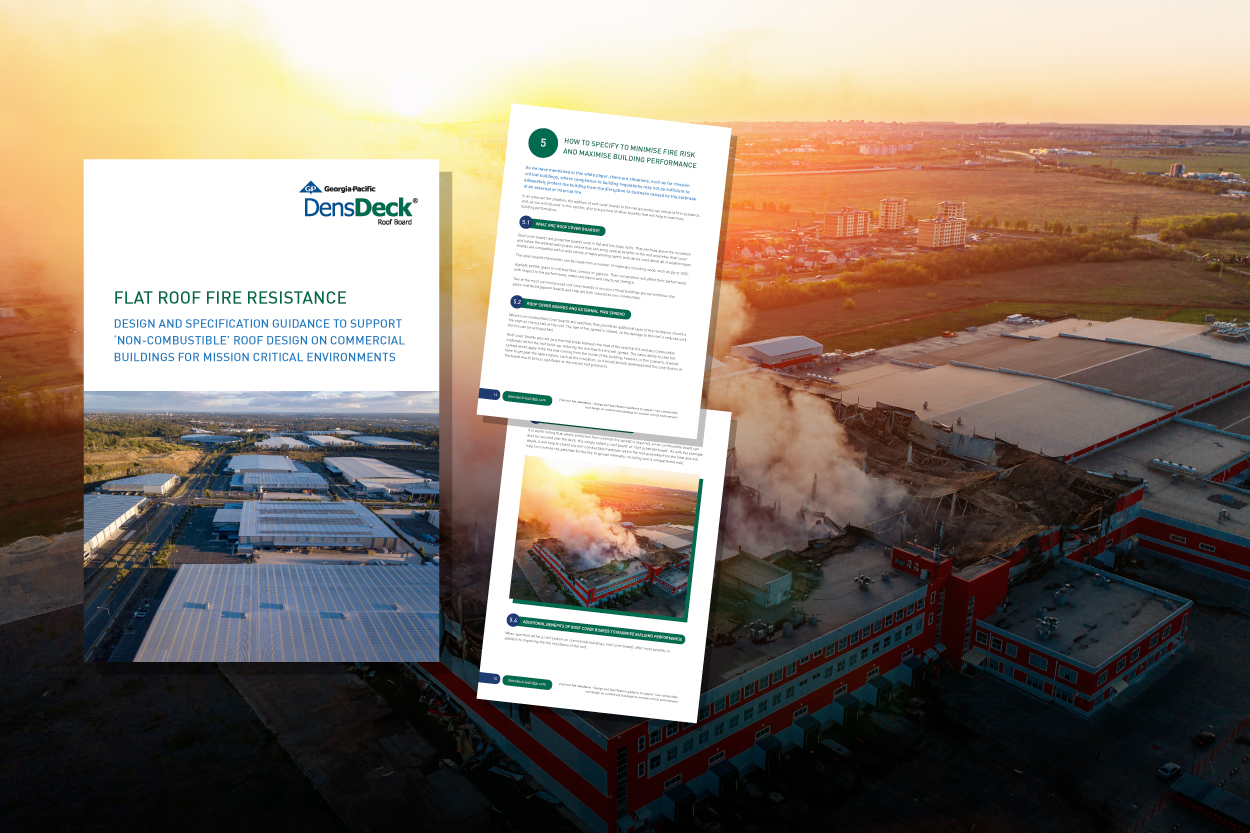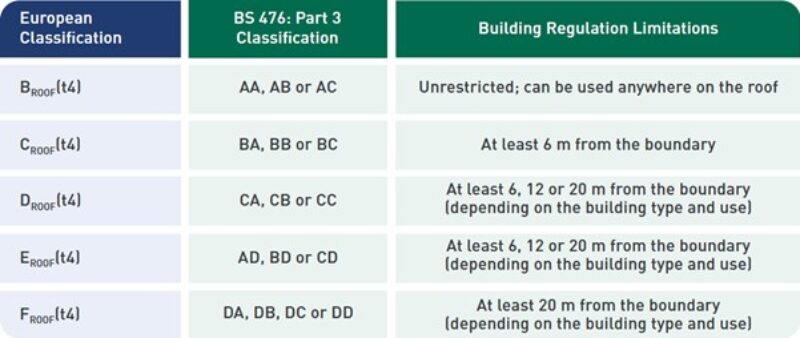Achieving UK and European fire standards and flat roof fire performance with roof cover boards

Achieving UK and European fire standards and flat roof fire performance with roof cover boards
Mission critical facilities that must operate 24/7 without interruption have specific building performance requirements that make the use of roof cover boards an attractive option. Mission critical building’s roofs must be capable of protecting the building from events that could cause damage to the valuable equipment contained within, and any events that could cause operational downtime that carries considerable financial implications. Therefore, the specification of a roof with high weather resistance, a robust waterproofing layer and increased resistance to the passage of fire is desirable for mission critical buildings. The roof must also meet the requirements of UK and European fire standards.
Several tests can be used to classify the fire-resistant properties of both the individual materials that can be used in flat roofs and the combination of materials that make up a flat roof specification. Below is a brief description of these tests.
Reaction to fire BS EN 13501-1 and ‘Euroclass’ fire classifications of flat roofs

BS EN 13501-1 provides the fire classification procedure for all construction products when using the data from the tests that include ‘Heat of combustion’, ‘Attack by a single burning item’ and ‘Ignitability by Direct Impingement Flame’. This allows classifications to be assigned based on performance data from the tests and these are expressed as ‘Euroclass’ ratings where ‘A1’ is the highest and ‘F’ is the lowest.
EN ISO 1182 – ‘Reaction to fire for building products – non-combustibility’ test is the most stringent and difficult to pass. Products rated as ‘A1’ have passed this test within the required limits to be classed as products that do not contribute at any stage of the fire, including the fully developed fire.
The BS476: Part 3 test is a British Standard that looks at how a section of a roof behaves when subjected to fire from the outside of the roof.
The BS476 Part 3 test has long been used in the UK and is not one that would be familiar for projects within Europe where another test TS 1187 is used. However, whilst BS476 still appears in the Annex of Approved Document B of the UK Building Regulations, it has now been superseded by TS 1187.
TS1187 has four tests available, all testing in different ways and testing different aspects of how fire affects the roof.
These reflect the different approaches to fire testing flat roofs throughout Europe and each country can decide which tests they wish to reference within building regulations. Test four is used in the UK.

The main difference from the BS476 test is that fire penetration is the most important factor in TS1187. This is due to the main focus being on protecting the lives of people under the roof and not the materials on the top. Therefore, as long as the sample passes the preliminary test, only the result of the penetration test is needed.

Approved Documents and FM Approvals, what is the difference in fire performance of a flat roof?
Approved Documents provide guidance on how to achieve compliance with each part of the UK Building Regulations and cover issues such as structure, ventilation, resistance to the passage of sound, and fire safety. The latter is covered by Approved Document B, where guidance on the performance expected of materials and building work is given in order to achieve compliance in common building situations.
As well as the British and European tests, there is another approach to specifying the fire resistance of roofs by choosing roof assemblies that have FM Approval.
This approach still requires compliance with national Building Regulations and any additional local planning requirements; however, FM Approved assemblies typically deliver performance above and beyond regulatory requirements.
FM Approvals tests to insurance standards and is concerned with events that could cause loss of property or loss of business. Tests include the ASTM (formerly known as American Society for Testing & Materials) test ‘E108’. This can test the roof assemblies either on combustible or non-combustible decks and it simulates the fire originating outside the building and wind blowing over the roof at 12 miles per hour.
DensDeck® Roof Board is a non-combustible, glass mat faced gypsum core board suitable for use in mission critical buildings and can help achieve the required UK and European fire standards as well as meet the requirements of FM approved installations. DensDeck® Roof Board is classified as A1 in accordance with EN 13501-1 and non-combustible as described and tested in accordance with ASTM E136.
To understand more about the requirements of mission critical facilities and FM Approval in greater detail, as well as a detailed look at UK and European fire standards, you can download our white paper, ‘Flat roof fire protection design and specification, guidance to support non-combustible roof design’, or contact one of our team today who will be happy to help.
Contact Us
Start your project or simply get specification advice by dropping us a message.
One of our team will be in touch as soon as possible.